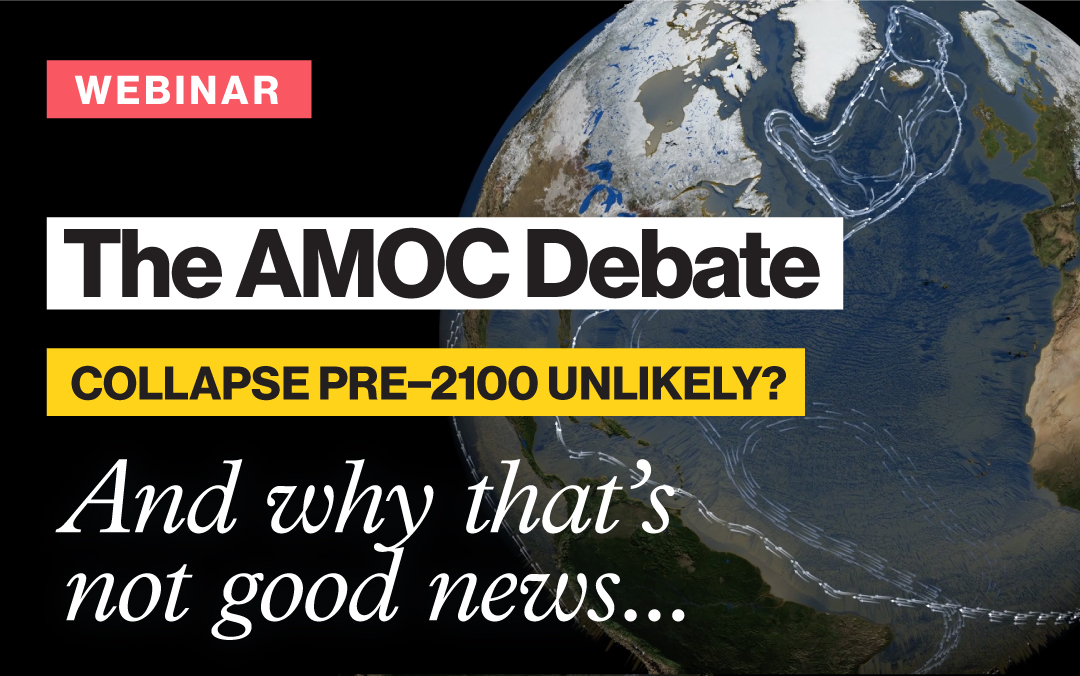We recently came across a compelling New York Times article by Raymond Zhong and Mira Rojanasakul that introduces the urgent issue of climate tipping points—critical thresholds where small changes could lead to dramatic and irreversible shifts in the Earth's environment. This piece with its engaging visuals is a perfect entry point for anyone looking to understand the potential risks our planet faces. It echoes concerns raised in a recent paper by Maya Ben-Yami and colleagues on the large uncertainties involved in predicting such tipping events.
Climate Tipping Points: A Wake-Up Call
As climate change intensifies, the Earth's most critical natural systems —including coral reefs, polar ice, rainforests, tropical monsoons and ocean currents—are nearing dangerous thresholds or tipping points.
These climate tipping points are not just abstract concepts; they represent real and present dangers. As greenhouse gas emissions continue to rise, the risk of crossing these thresholds grows ever greater, as climate scientist Niklas Boers and others in the field warn. For example, thawing permafrost could release vast amounts of stored carbon into the atmosphere, accelerating global warming. Similarly, the potential collapse of polar ice sheets could lead to significant sea-level rise, impacting coastal communities worldwide.
What is at Risk
- Coral reefs: Coral reefs, some of the most diverse ecosystems, are under increasing threat from rising ocean temperatures. Warmer waters cause corals to expel the algae they rely on, leading to bleaching. With ongoing warming, these events are becoming more frequent. Scientists suggest that up to 99% of coral reefs could be at risk if global temperatures continue to rise.
- Thawing Permafrost: In the Arctic and sub-Arctic regions, permafrost is beginning to thaw, releasing stored carbon into the atmosphere. This process, which could significantly accelerate global warming, is one of the most unpredictable tipping points. The rate and extent of permafrost thawing remain difficult to forecast, making it a critical area of concern.
- The Greenland Ice Sheet is melting at an alarming rate due to rising temperatures. As the ice surface melts and lowers in elevation, it is exposed to warmer air, which accelerates the melting process. This could contribute to sea-level rise over the coming centuries, with implications for ocean currents and climate patterns.
- The West Antarctic Ice Sheet faces threats primarily from warm ocean waters. Glaciers here extend into the sea, where they are exposed to warm currents that melt and weaken the ice shelves from below. This weakening could lead to increased ice flow into the ocean, potentially destabilizing the ice sheet. The West Antarctic Ice Sheet could potentially begin an irreversible retreat during this century.
- The Amazon Rainforest plays a significant role in regulating Earth's climate by absorbing carbon dioxide. However, deforestation and climate change are affecting its ability to function as a carbon sink. If significant portions of the forest are altered, it could shift towards a more savanna-like state, affecting carbon absorption and local weather patterns.
- The West African Monsoon brings seasonal rains that are vital for parts of Africa. Historical shifts in this monsoon have occurred in response to climate changes, and rising global temperatures could influence its future behavior. Any changes in the monsoon could affect rainfall patterns, with implications for agriculture and water resources in the region.
- The Atlantic Meridional Overturning Circulation (AMOC) is an important ocean current system that helps distribute heat globally. The influx of freshwater from melting Greenland ice could alter this system, with the AMOC already showing the signs of slowing down. Changes in the AMOC could affect weather patterns, including winter conditions in Europe and rainfall in the tropics.
Importance of Uncertainty: Latest Insights
This New York Times article resonates strongly with a recent study by Maya Ben-Yami and colleagues published in Science Advanced. The paper emphasized the complexity and massive uncertainties in predicting when mentioned tipping points might be crossed. These large uncertainties mean we need to be extra cautious, even more so than if we could predict the exact timing of such events. As the science progresses, it is becoming increasingly clear that the time for action is now. Every additional gram of carbon dioxide we emit brings us closer to these irreversible changes.
For those interested in further exploring these issues, we recommend reading the full New York Times article here and revisiting the recent study by Ben-Yami and authors in Science Advances to better understand the complexities and uncertainties of tipping events.





